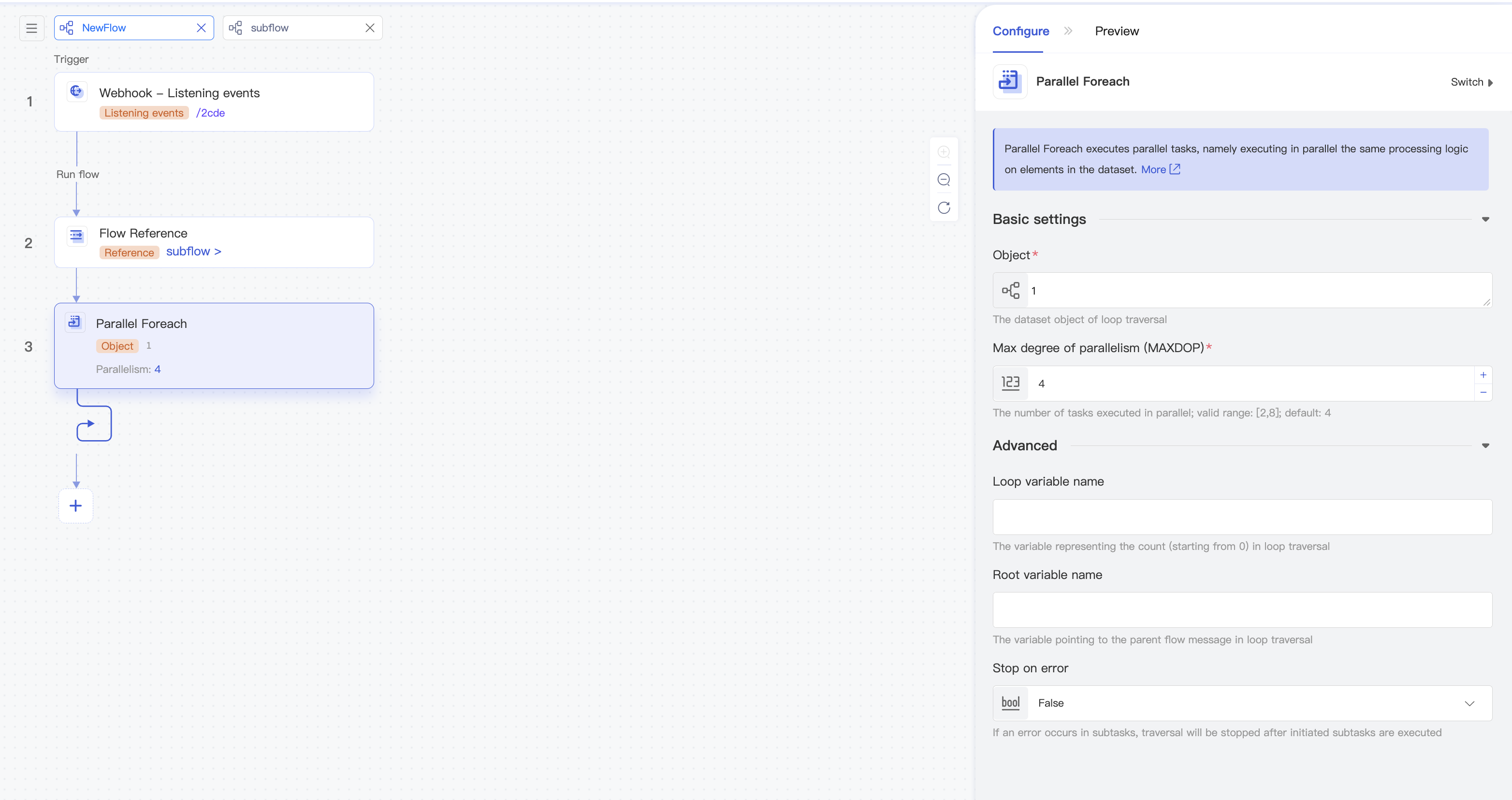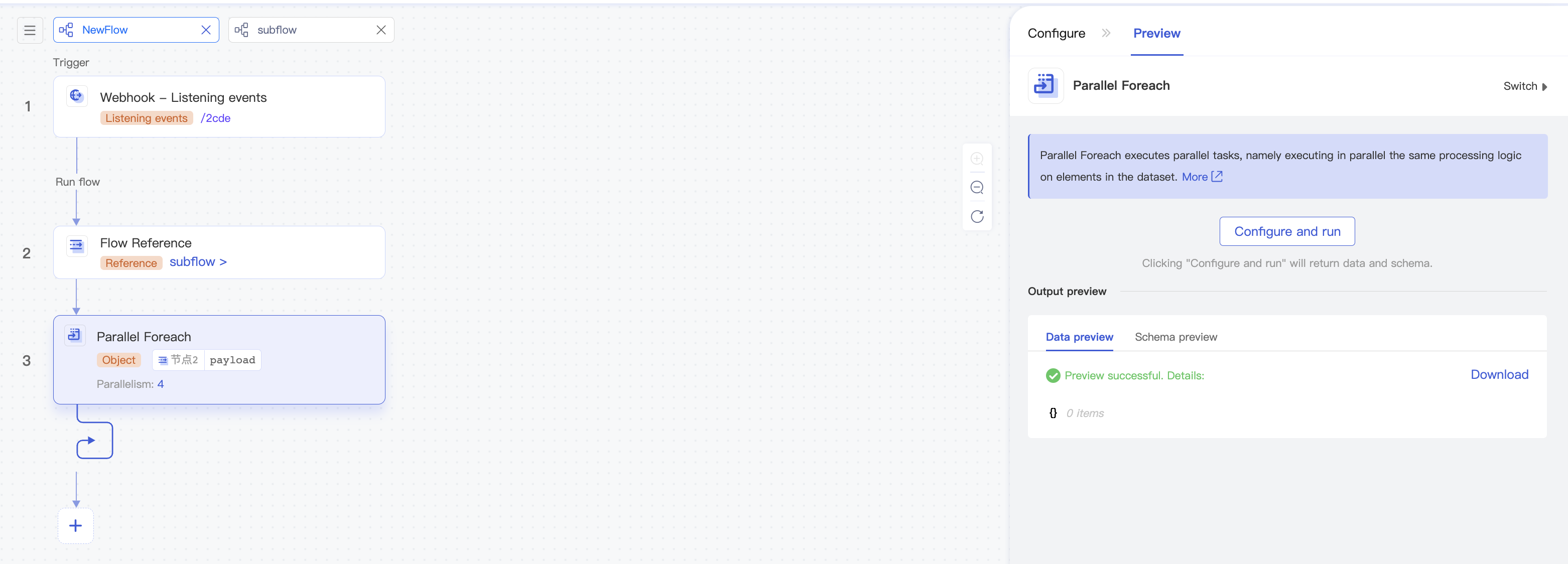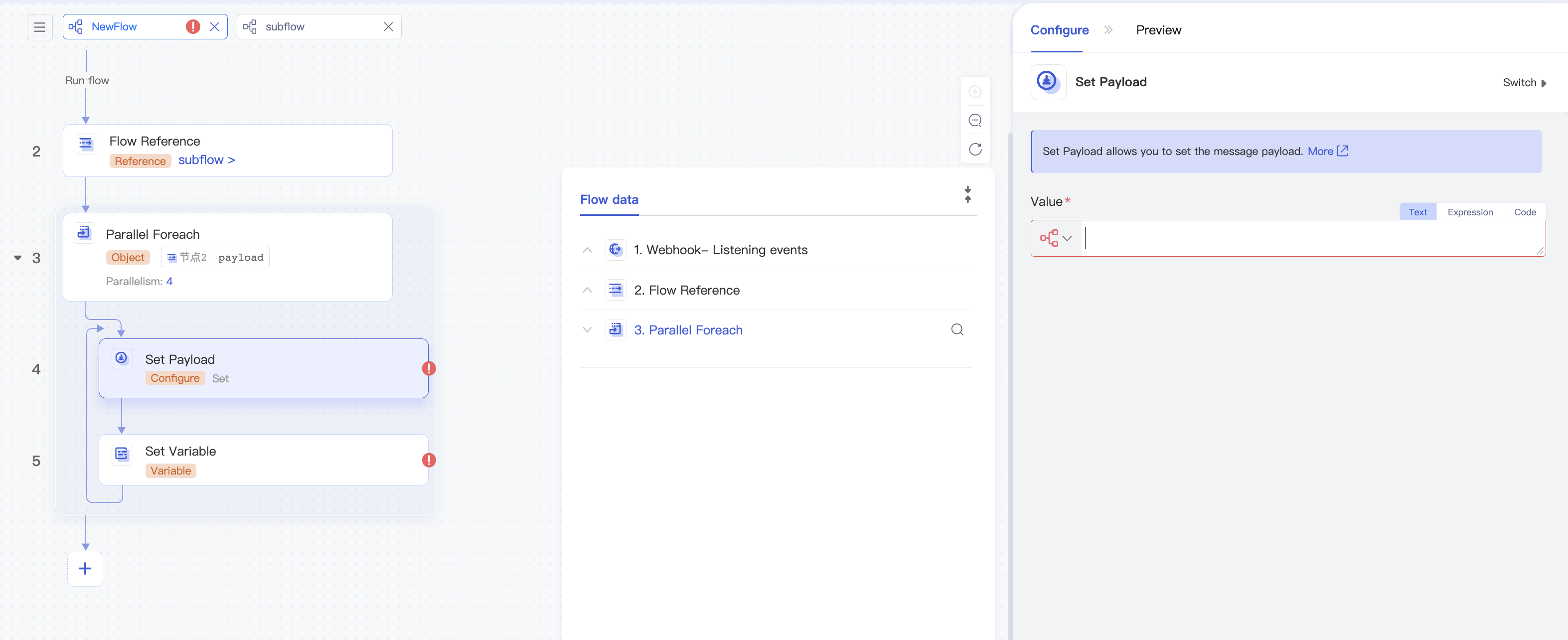Overview
Parallel Foreach is used to execute tasks in parallel. It executes the same processing logic on all elements in a data set in parallel. The actual parallelism is the lesser value between the number of remaining elements and the configured maximum parallelism.
A Parallel Foreach subflow has read-only access to the variables in the main flow and the output of other components, and modifications performed by the subflow will not affect the main flow.
After processing, the result of each element will be output to payload in message in the original sequence. Parallel Foreach is generally used in batch data processing scenarios, such as batch query and batch data import.
Operation Configuration
Parameter configuration
| Parameter | Data Type | Description | Required | Default Value |
|---|---|---|---|---|
| Data set | string, list, dict, and int | The data set to be traversed.
|
Yes | None |
| Maximum parallelism | int | The maximum number of tasks executed in parallel. Value range: 2–8. | Yes | 4 |
| Counter | string | The counter is a variable, which stores the current number of iterations and starts from 0. You need to enter a variable name such as msg.vars.get('#counter variable#') to use the counter.For example, if the counter variable is set to the default value counter, in the first loop, msg.vars.get('counter') will be 0, and in the second loop, it will be 1. |
No | counter |
| Root message | string | The root message is also a variable, which stores the message of the main flow. You need to enter a variable name. You can enter msg.vars.get('#root message name#').payload to access the payload data of the main flow. If the default value rootMessage is used, you can use msg.vars.get('rootMessage').payload to access the payload data of the main flow in the Parallel Foreach subflow. |
No | rootMessage |
| Stop while error occurred | bool | If a subtask throws an error, traversal will stop after the execution of the initiated subtask is completed. | No | False |
Configuration page

Data preview
| Preview Field | Data Type | Description |
|---|---|---|
| payload | any | Input value in each traversal, which is also an element in the data set. |
| index | int | Position in each traversal. This field represents the subscript position of the current input value in the data set, which starts from 0. |

The data preview content is visible only in the subflow. Components in the subflow can directly use payload and index in the Parallel Foreach component as shown below:

message input to the subflow
message Attribute |
Value |
|---|---|
| payload | An element in the data set. For example, if the data set to be iterated is [1,2,3], in the first loop, payload in the subflow will be 1, and in the second loop, it will be 2.If the data set to be iterated is {"key":"key1", "value":"value1"} of dict type, in the first loop, payload in the subflow will be value1, and in the second loop, it will be value2. |
| error | Null. |
| attribute | Null. |
| variable | This attribute inherits the variable of the main flow and has two new variables: counter and root message. If you use the default values of the two new variables, you can use expressions msg.vars.get('counter') and msg.vars.get('rootMessage') to access them.If Set Variable is used in For Each, the new variables will be added to variable during subflow execution. |
Output
The output result of Parallel Foreach doesn't contain the variable variable used in the processing logic but only the data in payload. The output payload is a variable of list type, which contains the iteration result of each element in the raw data set in the original sequence. attribute inherits the value of the previous component.
The message output by the component is as detailed below:
message Attribute |
Value |
|---|---|
| payload | This attribute is of list type and contains the processing result of each element in the input sequence in the raw data set. |
| error |
|
| attribute | This attribute inherits the attribute of the component previous to Parallel Foreach. |
| variable | This attribute inherits the variable of the component previous to Parallel Foreach. |
Example
The following describes how to use the Parallel Foreach component to multiply all elements in the list by 2. The raw data set is [1,2,3,4].
Add a Parallel Foreach component, configure the data set
[1,2,3,4], and set the maximum parallelism to3.Add a Set Payload component to Parallel Foreach to multiply the elements in
payloadin the subflow by 2.Output the result.

 Yes
Yes
 No
No
Was this page helpful?